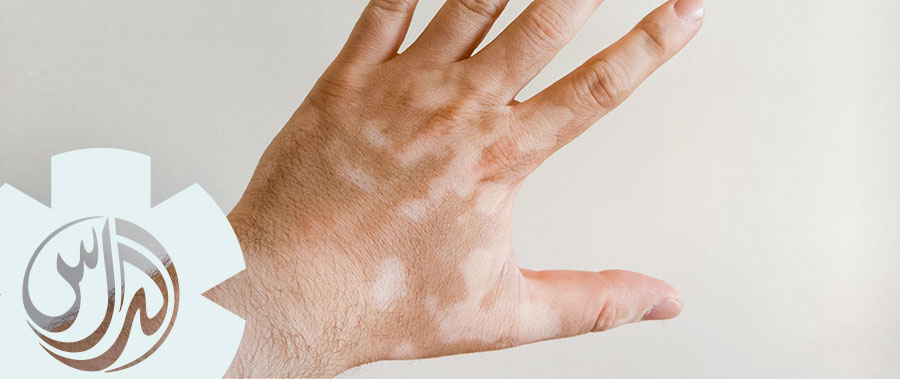
Vitiligo is a skin disease in which melanocytes (skin cells that produce the pigment melanin) stop functioning. This depigmentation process is characterized by white patches on the skin, but in some cases hair, the eyes or the inside of the mouth can be affected. Vitiligo cannot be passed from one person to another, and it isn’t infectious. This condition occurs in 1 out of 100 people, and it affects both men and women equally. Ethnic origin and skin color are in no way related to vitiligo occurrence, but according to some reports as much as 8.8% of people in India are plagued by this disease. Although it can appear at any age, vitiligo most frequently develops before a person turns 20. In certain cases, affected areas of the skin may regain their pigment without any treatment, but this is very rare. Vitiligo is not life-threatening but it can lead to a reduced quality of life due to appearance-related issues.
Vitiligo appears when skin cells stop producing melanine, a pigment that gives the color to the skin, eyes and hair. It is believed that an autoimmune disease is responsible for this. People who suffer from vitiligo have good overall health, but this disease frequently occurs in comorbidity with other autoimmune and systemic diseases such as diabetes, systemic lupus erythematosus, alopecia areata, thyroid disease and others. There are two types of vitiligo – localized and generalized.
- Pigment loss occurs in one or more localized areas
- Pigment loss occurs on only one side of the body. It mainly affects children and it is not related to autoimmune disease
- Only mucosal membranes are affected
- It appears on parts of the body that are not central such as face, head, fingers or feet
- Patches are distributed all over the body
- A combination of acrofacial and vulgaris, or segmental and acrofacial/vulgaris vitiligo
- A complete or almost complete loss of pigment
People with a darker tan usually suffer from vitiligo, and it mainly occurs in exposed regions of the skin. Although the eyes may be affected, only the retina changes color while irises remain the same. Emotional stress can sometimes trigger vitiligo, and it usually afflicts regions of damaged or broken skin.
Vitiligo cannot be cured, but there are various methods for restoring pigment and evening out the tone. Still, it should be underlined that vitiligo treatment can be unpredictable and that outcomes can vary. More chances of restoring the pigment have patients who start with treatment at early stages. You should also bear in mind that some medications have serious side effects.
The most common treatment methods are:
- Corticosteroid creams. Those anti-inflammatory creams are used for skin repigmentation. They can be effective if they are used at early stages.
- Vitamin D. This vitamin is used topically as a cream in combination with UV therapy or corticosteroids.
- A combination of phototherapy and medications. Psoralen combined with UV light is used for skin repigmentation. This treatment may lead to sunburn, blisters and an increased cancer risk.
- Light or laser therapy. Both these therapies are used for repigmentation.
- If none of the above procedures works, a monobenzone medication is applied to areas of the skin that are not affected by vitiligo in order to lighten them and even them out with already depigmented areas.
There are also several surgical procedures that try to even out the tone of your skin. Skin grafting and blister grafting are the most common surgeries. As this systemic disease requires a serious diagnostic procedure, our dermatology department offers you top-notch treatment.
Book a visit 04 452 998 or by filling the online form